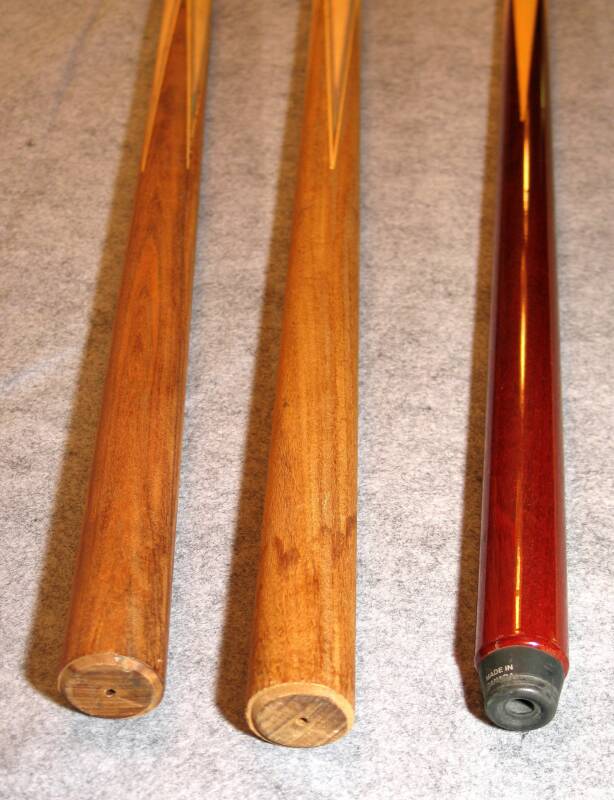The Brunswick 26 1/2 was introduced in the early 1900's and quickly became one of the most popular cues in history. This one-piece cue featured 4 points, colorful veneers, and exotic woods.
In the 1930's Brunswick developed a line of cues that were to become the legendary full splice one piece cues that are famous today. Who would have thought that this inexpensive line of bar cues, with names like Challenger, Tru-Balance, and Carom King would set the standard for bar and two piece custom cues which would dominate the cue making world for the next 30 years?
In the late 1930's the 26 1/2 was renamed the Carom King. History again changed in 1941 when it was renamed the "Willie Hoppe Ttitlist" and a legendary cue was born. The "Titlist" was a one-piece cue with vividly colored veneers, four points, a buckhorn ferrule, a burned in signature on the forearm, and a decal on the bottom.
It was also the blank used on the most popular two piece cue of all time, the Willie Hoppe Professional.
Herman Rambow made his customs based on blanks obtained from Brunswick. So did George Balabushka , Frank Paradise, Eugene Balner, Gus Szamboti, and numerous other cue makers over the years. The Titlist is easily the most famous, widely utilized, and easily recognized cue design.
What is a blank? It is a fully assembled cue turned oversize. In full splice construction, the handle part consists of prongs. The front part of the cue, the nose, is cut to slide into the handle prongs. Veneers are thin layers of wood that are mitered and glued beteen the pieces. All of these parts are then glued together and rough turned on a lathe. These blanks were obtained by the cue makers who added their joints , wraps, inlays, and other features.
Here are two of the original titlist blanks from the 1950's, unturned. These cues are at 57 inches, finished standard full length for those days.





